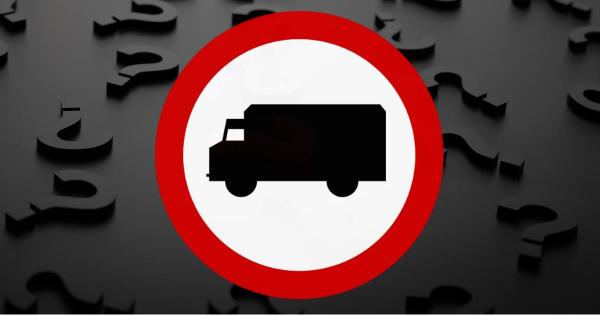
The driving bans do not apply to all vehicles in the same way.
Each country introduces exceptions for special circumstances and particular needs of the transport industry.
Exceptions to HGV driving bans in Europe are an important way of ensuring the smooth flow of road traffic and the effective operation of various sectors of the economy. These exceptions can apply in various situations and are subject to specific conditions and regulations.
AUSTRIA
CROATIA
CZECH REPUBLIC
FRANCE
GREECE
LIECHTENSTEIN
LUXEMBOURG
GERMANY
POLAND
ROMANIA
SLOVAKIA
SLOVENIA
HUNGARY
ITALY

France lifts one of the driving bans in May, but increases the number of summer driving bans
French authorities have lifted the driving ban on May 9 and as well as additional driving bans in the for certain HGVs with a GVW above 7.5 tons.
This means that driving bans for HGVs with a GVW above 7.5 tons introduced in the ordinance issued on April 16, 2021 do not apply on Thursday, May 9, from 00:00 to 10:00 PM.
The following additional driving bans apply in the summer to:
❌ I. vehicles or combinations of vehicles with a GVW above 7.5 tons, used for transporting goods with the exception of specialized and agricultural vehicles and equipment specified in Annex II to the ordinance issued on April 16, 2021, on the entire metropolitan road network, from 7:00 AM to 7:00 PM, on Saturdays, July 6, July 20, July 27, August 3, August 10, August 17 and August 24.
❌ II. The driving bans listed in item I do not apply on Saturday, July 6, in the following regions:
◾ Bourgogne-Franche-Comté and Grand Est, with the exception of the A6 and A31 motorways (towards Lyon and Beaune respectively), where the movement of such vehicles is prohibited;
◾ Hauts-de-France, with the exception of the A1 and A16 motorways (towards Paris), where the movement of such vehicles is prohibited because of their connections with the A29 motorway (southern connection with the A16 motorway).
❌ III. The prohibitions listed in point I do not apply on Saturday, August 24, in the following regions:
◾ Bourgogne-Franche-Comté and Grand Est, with the exception of the A6 and A31 motorways (towards Paris and the border with Luxembourg respectively), where the movement of such vehicles is prohibited;
◾ Hauts-de-France, with the exception of the A1 and A16 motorways (towards Lille and towards the Belgian border respectively), where the movement of such vehicles is prohibited as far as their junctions with the A29 motorway (southern connection with the A16).
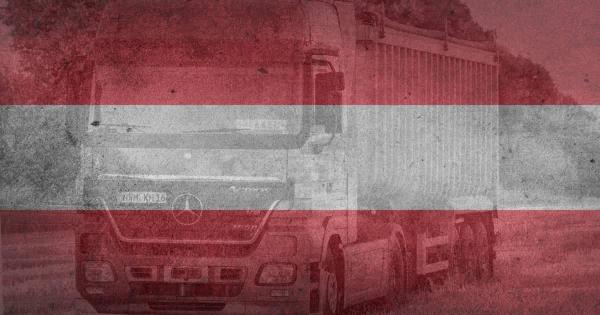
Closure of the Arlberg tunnel – diversions for HGV traffic
The second renovation of the Arlberg Tunnel on the S16 expressway starts on April 15 and is scheduled to last until November 22. In addition, ASFINAG is renewing the St. Jakob toll booth and the entire toll area. As a result, HGV traffic must use diversion routes with the exception of vehicles that are eligible for exemptions.
❌ Alternative routes
As soon as the tunnel is closed, the B197/L197 road throught the Arlberg Pass will serve as the regional diversion route. Traffic congestion and delays are expected along this route, especially on weekends, which is why drivers are advised to allow addtional time for the journey or tuse one of the alternative routes listed below.
❌ The alternative routes during the closure of the Arlberg Tunnel:
◾ the B 197/L 197 road
◾ the route via Rosenheim to Munich (Germany)
◾ the road through the St. Gotthard tunnel (Switzerland)
◾ the road through the San Bernardino tunnel (Switzerland)

❌ Who is allowed to use the B 197/L 197 road through the Arlberg Pass?
While the Arlberg Tunnel is closed, trailers and articulated vehicles are generally prohibited from using the B 197/L 197 road and have to use alternative routes. However, vehicles whose point of departure or destination are located in communes listed below are allowed to use the B 197/L 197 road. No special permission is required to benefit from the exemption. It should be remembered that lorries with trailers and articulated vehicles are generally prohibited from driving at weekends (from 9:00 AM on Saturdays, to 10:00 PM on Sundays).
❌ Exceptions
◾ Lorries with trailers and articulated vehicles are allowed to use the B 197/L 197 road from 10:00 PM on Sundays to 9:00 AM on Saturdays, if the journeys comply meet the following requirements:
Originating /terminating traffic: if the point of departure or the destination is located in the communes of Bludenz, Feldkirch or Landeck. This means that the place of loading or unloading is located in one of the communes listed above.
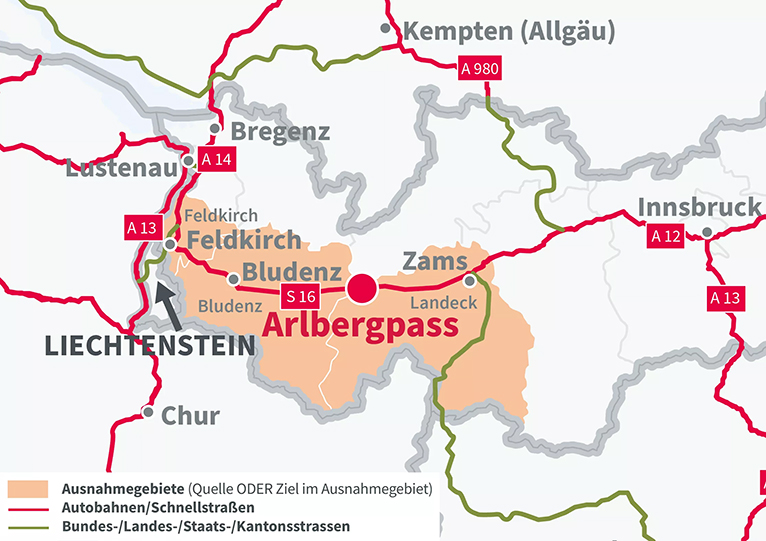
◾ Northwest-southeast traffic: if the point of departure or the destination is located in Vorarlberg, in Liechtenstein, in the districts of Lake Constance, Konstanz, Sigmaringen, Tuttlingen, Schwarzwald-Baar or Rottweil, in the cantons of St. Gallen, Thurgau, Appenzell Innerrhoden, Appenzell Ausserrhoden or Glarus and in the provinces of Bolzano, Trento or Belluno. In other words, the B197/L197 road cannot be used as a transit route, for example to shorten the journey through the region.
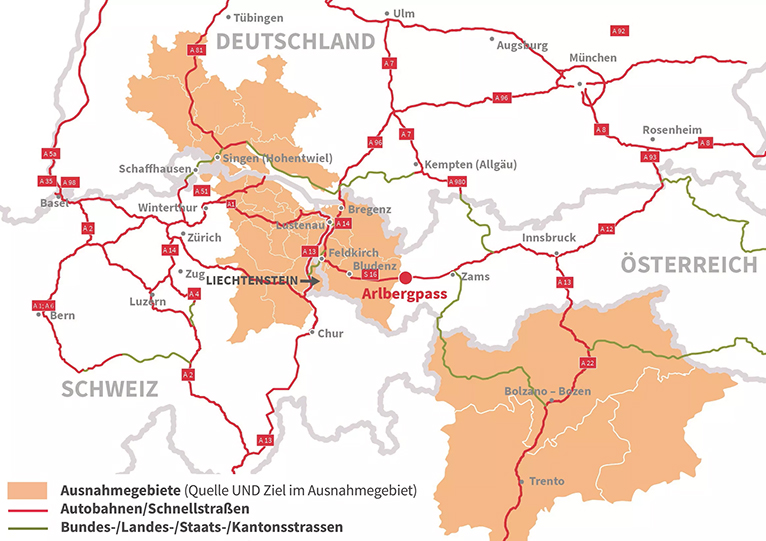
◾ West-east traffic: if the point of departure or the destination is located in Vorarlberg, in Liechtenstein, in the districts of Lake Constance, Konstanz, Sigmaringen, Tuttlingen, Schwarzwald-Baar or Rottweil, in the cantons of St. Gallen, Thurgau, Appenzell Innerrhoden, Appenzell Ausserrhoden, Glarus, Schwyz, Zug, Zurich or Schaffhausen, in the following municipalities/towns in the canton of Graubünden (north of the Chur-Davos line): Ardez, Calfreisen, Castiel, Chur, Conters i. P., Davos, Fanas, Felsberg, Fläsch, Fideris, Flims, Ftan, Furna, Grüsch, Guarda, Haldenstein, Igis, Jenaz, Jenins, Klosters-Serneus, Küblis, Laax, Langwies, Lavin, Lüen, Luzein, Maienfeld, Maladers , Malans, Mastrils, Pagig, Peist, Ramosch, Saas i. P., Samnaun, Says, Schiers, Scuol, Seewis i. P., Sent, St. Antönien, St. Antönien-Ascharina, St. Peter, Susch, Tamins, Tarasp, Trimmis, Trin, Tschlin, Untervaz, Valzeina or Zizers AND in the Tyrolean districts of Landeck, Imst, Innsbruck – Stadt, Innsbruck – Land or Schwaz. In other words, the B197/L197 road cannot be used as a transit route, for example to shorten the journey through the region.


Weekend closure of the Fréjus tunnel
The the Fréjus tunnel will be completely closed in both directions from Saturday, April 6 to Monday, April 8 (32 hours).
The reason for the closure are maintenance works and safety exercises.
In addition, on the following nights in April an alternating traffic schedule will be used along the entire length of the tunnel between 10:30 PM and 4:30 AM:
4, 5, 9, 10, 11, 12, 13, 16, 17, 18, 19, 20, 23, 26, 27
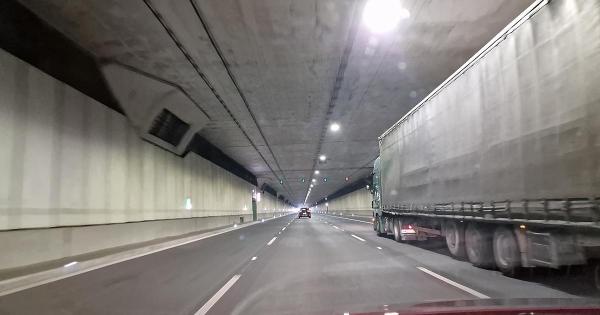
Closures of the Fréjus tunnel
The Fréjus Road Tunnel under Col du Fréjus in the Cottian Alps connecting Modane in France with Bardonecchia in Italy will be closed in both directions on the following nights:
⏩ from 10 PM on Tuesday, March 5 to 6:00 AM on Wednesday, March 6,
⏩ from 10 PM on Wednesday, March 6 to 6:00 AM on Thursday, March 7,
⏩ from 10 PM on Tuesday, March 12, to 6:00 AM on Wednesday, March 13.
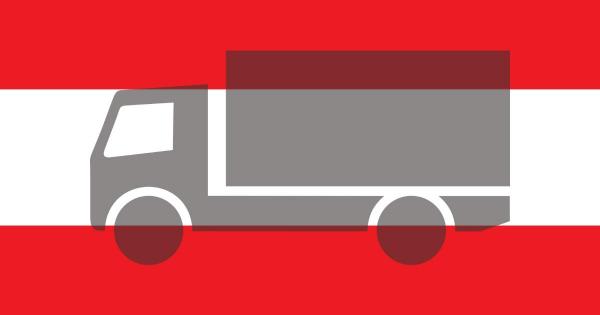
Austria: additional driving bans in 2024
By virtue of a regulation of March 28, the Federal Ministry of Climate Protection, Environment, Energy, Mobility, Innovation and Technology has published a calendar of additional driving bans for 2024.
The ban applies to vehicles or articulated vehicles with a maximum gross weight exceeding 7.5 t on the following dates:
◾ March 29 from 4:00 PM to 10:00 PM, March 30 from 11:00 AM to 3:00 PM and April 25 from 11:00 to 10:00 PM, on the A 12 motorway in the Inn Valley and on the A 13 motorway via the Brenner Pass if the destination is located in Italy or can only be reached via Italy;
◾ on all Saturdays from July 6 to August 31 inclusive, from 7:00 AM to 3:00 PM on the A 12 motorway in the Inn Valley and on the A 13 motorway via the Brenner Pass, if the destination is located in Italy or can only be reached via Italy,
◾ on March 29 and October 3 from 12:00 to 10:00 PM and on all Saturdays from July 6 to August 31 from 7:00 AM to 3:00 PM on the A 12 motorway in the Inn Valley and on the A 13 motorway through the Brenner Pass if the destination is located in Germany or can only be reached via Germany,
◾ on all Saturdays from July 6 to August 31 inclusive from 8:00 AM to 3:00 PM outside built-up areas in both directions on the following roads:
a) Loferer Straße B 178 from Lofer to Wörgl;
b) Ennstalstrasse B 320 from km 4,500;
c) Seefelder Straße B 177 along its entire length;
d) Fernpass B 179 road from Nassereith to Biberwier;
e) Achensee Straße B 181 along its entire length;
f) Brenner Straße B 182 along its entire length
◾ on all Saturdays from June 29 to August 31 inclusive, from 8:00 AM to 3:00 PM on the A 4 motorway from the Schwechat junction to the state border at Nickelsdorf in both directions, with the exception of terminating and originating traffic to and from the municipalities of Neusiedl am See, Eisenstadt, Eisenstadt-Umgebung, Rust, Mattersburg, Bruck an der Leitha, Gänserndorf and Korneuburg.
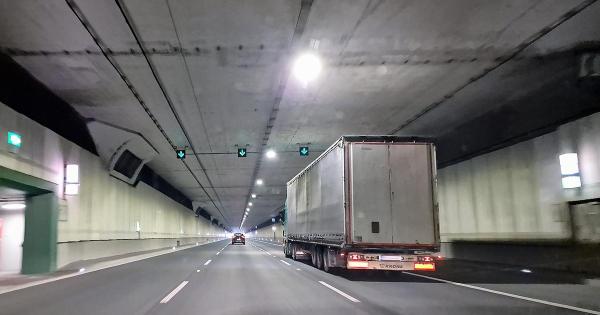
Total closures in the Mont Blanc Tunnel in March
Total closures from 10.00 PM to 6.00 AM on the following nights:
– Monday, March 11 / Tuesday, March 12,
– Tuesday, March 12 / Wednesday, March 13,
– Wednesday, March 13 / Thursday March 14.
– Thursday March 14 / Fiday, March 15.
Total closures from 11.00 PM to 4.00 AM on the following night:
– Thursday, March 21 / Friday, March 22.
Alternating one-way traffic from 10.30 PM to 6.00 AM on the following nights:
– Monday, March 4 / Tuesday, March 5,
– Tuesday, March 5 / Wednesday, March 6,
– Wednesday, March 6 / Thursday, March 7,
– Monday, March 18 / Tuesday, March 19,
– Tuesday, March 19 / Wednesday, March 20,
– Wednesday, March 20 / Thursday, March 21.

Hungary: a last-minute change in HGV driving bans
The Hungarian Ministry of Transport has partially suspended the HGV driving ban during the upcoming long weekend by establishing so-called \”time windows\” when the movement of HGVs with a MAM above 7.5t is allowed.
The weekend driving ban will be in force for a total of 72 hours but will be suspended from 10:00 PM to 6:00 AM, as indicated below:
❌ March 29 (Friday) from 6:00 AM to 10:00 PM
❌ March 31 (Sunday) from 6:00 AM to 10:00 PM
❌ April 1 (Monday) from 6:00 AM to 10:00 PM.
In a statement, the Ministry has informed that the partial derogation has been introduced to ensure an uninterrupted supply of goods and meet an increased demand. Unfortunately, the decision was announced just a few hours before the time the regular holiday driving ban should come into effect this evening.
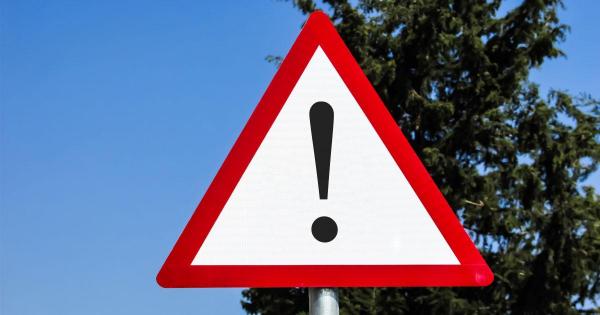
Tyrol: two extra days of traffic restrictions on the A13
On April 3 and 4, the flow of traffic on the A13 will be limited in order to enable a structural inspection of the Luegbrücke bridge stretching over the Wipttal valley.
The inspection is scheduled to start on April 3. Based on traffic data for 2023, this is likely to cause traffic jams on the A13 motorway. To ensure a smooth flow of southbound traffic, on Wednesday (3.04) and Thursday (4.04) from 9:00 a.m. the number of vehicles from Germany crossing the border in Kufstein/Kiefersfelden will be limited.

Slovakia: derogation from the HGV driving ban on March 29
At the request of ČESMAD Slovakia, the Slovakian Presidium of the Police Force has granted a general exemption from the driving ban on Friday, March 29, in connection with the upcoming Easter holidays.
The derogation applies to all heavy goods vehicles traveling on motorways, roads for motor vehicles, 1st class roads and roads used by international traffic, entering Slovakia and travelling to destinations (e.g. the company’s base or the place of unloading) located in Slovakia.
Please be advised that that no exemption has been granted on Monday, April 1, which means that the driving ban is in effect as usual from 00:00 to 10:00 PM.